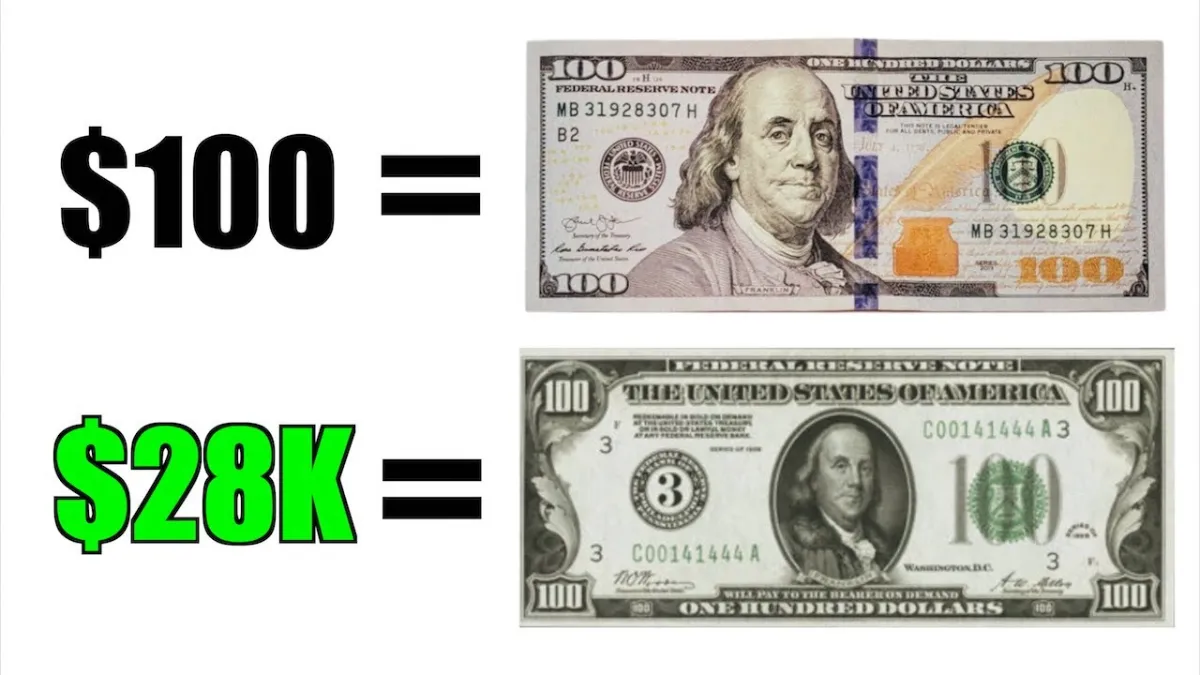Most people think a $100 bill is worth exactly that — one hundred dollars. But in the world of currency collecting, some rare and unusual $100 bills can be worth thousands, even tens of thousands, to the right buyer. Whether it’s due to printing errors, serial number rarity, or historical significance, your Benjamin Franklin could be a hidden treasure.
Let’s dive into what makes a $100 bill exceptionally valuable.
1. Fancy Serial Numbers
Serial numbers can turn an ordinary bill into a collector’s dream. Here’s what to look for:
Types of Fancy Serial Numbers:
- Low Serial Numbers: Bills starting with several zeroes (e.g., 00000045)
- Repeating Patterns: Like 12341234, 88888888, or 01010101
- Palindromes: Reads the same forwards and backwards (e.g., 12344321)
- Ladders: Consecutive numbers in order, like 12345678 or 98765432
- Solid Numbers: All digits the same, like 77777777
- Radar Notes: Mirror-image patterns (e.g., 15555551)
Value:
Fancy serial number $100 bills can sell from $500 to $10,000 or more, depending on rarity and condition.
2. Star Notes
A Star Note is a replacement bill issued by the U.S. Bureau of Engraving and Printing when a misprinted bill is removed. These are marked by a small star symbol next to the serial number.
Why It Matters:
- Printed in smaller quantities
- Rare in high denominations like the $100 bill
- Highly sought-after by collectors
Value:
$100 Star Notes can bring in $300 to $5,000+, especially in uncirculated condition or paired with a fancy serial number.
3. Printing Errors
Mistakes during the printing process can make a bill wildly valuable. These “error notes” are rare and prized for their uniqueness.
Common Error Types:
- Ink Smears or Smudges
- Misalignment (off-center printing)
- Missing Seals or Serial Numbers
- Double Printing or Overprints
- Cutting Errors (too large or uneven margins)
Value:
Depending on the error and condition, some $100 error bills have sold for $2,000 to over $15,000 at auctions.
4. Rare or Old Series Dates
Some older $100 bills — especially from limited production years — are worth far more than face value.
Look For:
- Small-size bills from 1928 to 1934
- Bills from the 1966 “Red Seal” series
- Uncommon Federal Reserve districts
- Bills with low total print runs
Value:
An older $100 bill in pristine condition can be worth $1,500 to $10,000+, especially if it also has a fancy serial number or rare seal.
5. Unique Historical Significance
Some $100 bills gain value due to historical context or notable events.
Examples:
- Bills signed by important treasury officials
- Bicentennial or commemorative notes
- Notes with mismatched seals or serials during rare political eras
These may not be “errors” per se, but their background makes them highly collectible.
Value:
Depending on provenance and demand, such bills can sell for several thousand dollars.
How to Know If Your $100 Bill Is Valuable
Here are a few quick steps:
- Check the Serial Number for patterns or stars
- Inspect for Printing Errors — compare it with a normal bill
- Look at the Series Date — older isn’t always better, but it can be
- Assess the Condition — crisp, uncirculated bills are worth more
- Consult a Currency Expert or Auction House
Final Thoughts
The next time you receive a $100 bill, take a closer look. What seems like ordinary cash could be worth hundreds or even thousands of dollars. Whether it’s a rare serial number, an error note, or a historical edition, currency collectors are always on the hunt for these hidden gems.
Tip: Don’t spend your $100 bill before checking its potential. You might be holding a small fortune in your hand.
